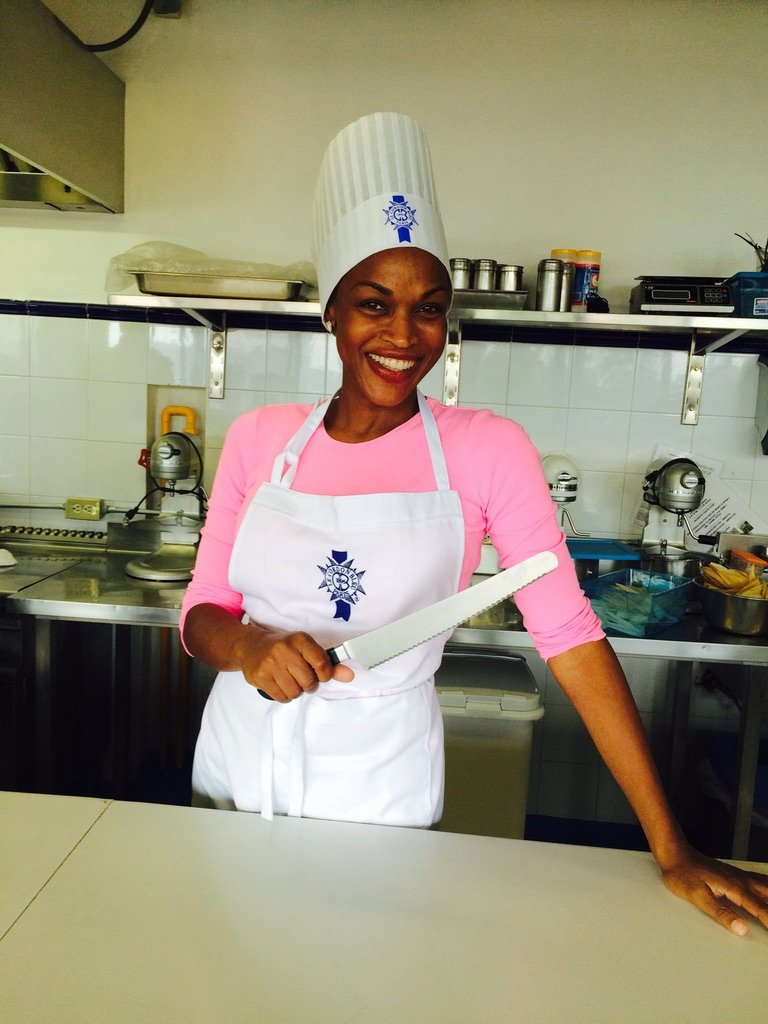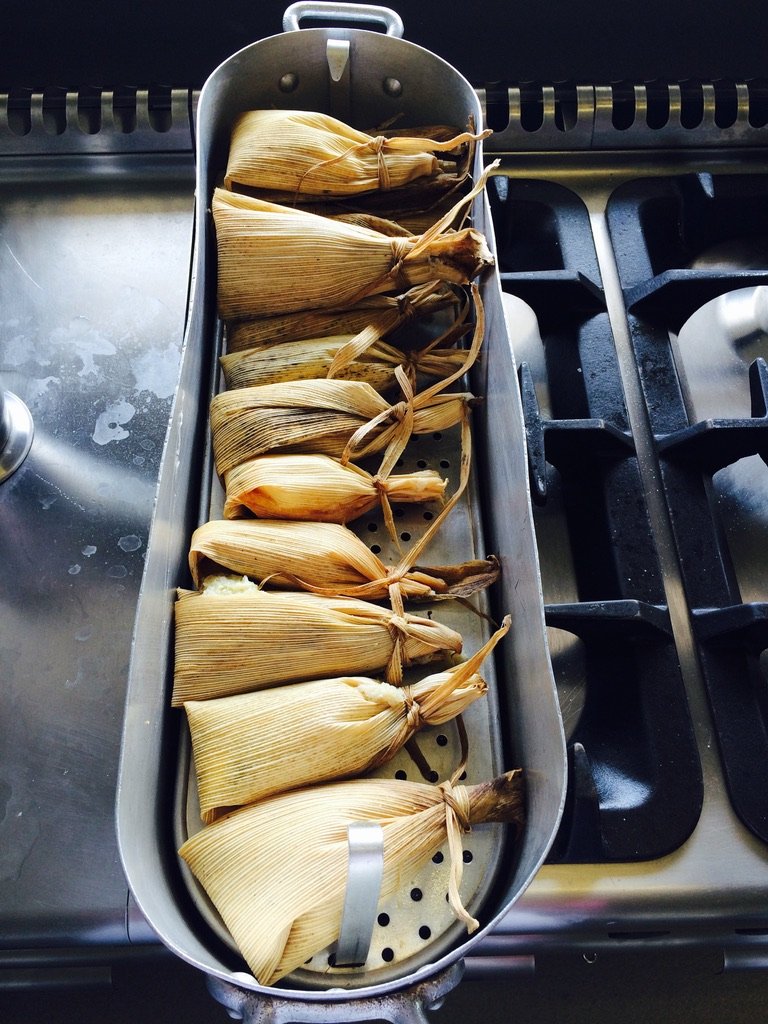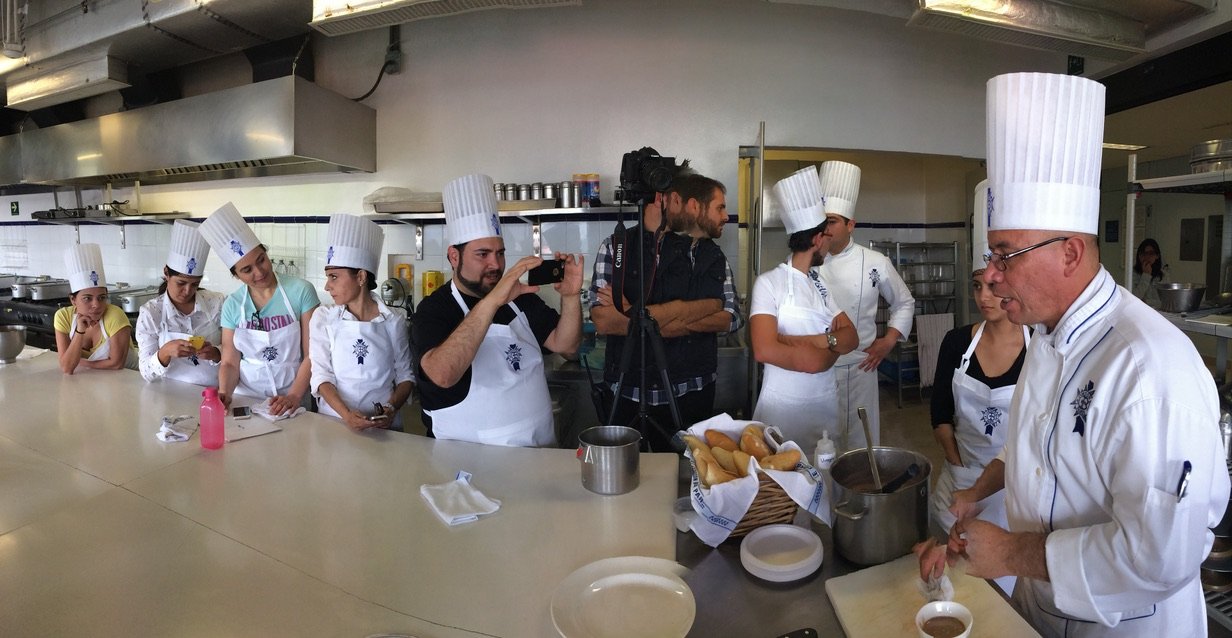25 Years as a Global Nomad
Entry Six - Mars Needs Women
School girls in traditional Turkmen attire.
In October of 2011, I went to Ashgabat, Turkmenistan. Turkmenistan is a small landlocked country in Central Asia, which, prior to 1991, was a Constituent Republic of the U.S.S.R . Its neighbors include Afghanistan, Iran, Kazakhstan, and Uzbekistan. To date, it’s the most unusual place I have visited - I will never forget what I saw there. I was lucky to be able to go - Turkmenistan only issues around 7,000 people per year and it's one of the least visited countries on Earth.
Let’s start with Ashgabat, the capital city, which is preternaturally pristine. It looks as if the streets and pavement are power washed every morning. I did not see a piece of garbage my entire stay. Almost all of the buildings are constructed of white marble; according to The Guinness Book of World Records, it has the world’s highest density of buildings made from white marble…500+ buildings of gleaming white marble. It’s also lit up like a Christmas tree - when the overnight plane I took from the Gulf to Ashgabat began its initial descent, the city was incandescent. It looked like it had been heavily misted with metallic white glitter and then backlit. Truly breathtaking. However, without 30,000 feet separating me from its sidewalks, its beauty faded a bit. Upclose, the white is more blinding than dazzling. The sight of so many white buildings in succession was eternally jarring - the starkness of the buildings never failed to be a visual shock.
In addition to appearing sterile, the city is curiously free of foot traffic and devoid of any evidence of inhabitation by human beings. No trash. No graffiti. No pedestrians. No street vendors. No food carts, or sidewalk cafes. It has wide boulevards with beautifully manicured medians. Many of its roundabouts have large statues of the former president. It reminded me of an expensive and never used set from an outer space-themed movie. I like my cities to look like…well…like cities. People! Cars! Noise! None of those.
When I checked into my hotel, no one was in the lobby except its employees. The hotel was elegant, expansive, and well-appointed. Its exterior and interior were clad in white marble. I stayed there for three or four days and the entire time, I only saw one other guest.
For the entire trip, my eyes were peeled back looking for the action. I saw nothing - not a shoe-shine man, not an early morning jogger, no families in the parks, nor couples out one dates, not a late night sex worker nor a partygoer. NOTHING. To this day, I wonder where in the world everyone was. I wish I could show you some personal photos, but I don’t have any. One of the first things I learned when I arrived is that it’s unlawful to take photographs. If you want pictures, you’re encouraged to go to a local bookshop or stationery store and purchase a government-produced and officially sanctioned box of postcards. A lot is outlawed in Turkmenistan. It is considered to be one of the most repressive countries in the world. Its citizens must swear on the Quran that they will not access banned websites when they sign up for a home internet connection. Its former president, Saparmurat Niyazov, gave himself the name ‘Turkmenbashi,’ which means leader of the Turkmen - shortly after he made himself president for life, he renamed the second largest city, Krasnovodsk to Türkmenbaşy after his self-proclaimed title. essentially took stock of his pet peeves and enacted laws outlawing them. Beards? Gold teeth? Facebook and Twitter? No. No. No. and No. Independent journalism is essentially outlawed. My Blackberry didn’t work and back then, very few people had access to the internet. Ten years ago, there were at least three state-run daily newspapers. Each day, the papers, placed on their front page news, an above-the-fold full color stock photo of the president.
All school children are required to use Ruhnama (The Book of the Soul), a spiritual and philosophical guidebook Turkmenbashi published in 2004. It is the basis for all educational instructio from kindergarten through university. Adults are also encouraged to read the book, apparently reading it three times guarantees one's admission into heaven. I didn’t get any pics, but I did purchase a copy of the Ruhnama - it’s pink and green.
All students wear the same outfit, whether they’re five or fifteen. Many of the girls and women wear their hair in the same style - long and plaited into braids on either side of their heads. While the cut of their dress dresses was a bit conservative for my taste, the embroidery that adorns them is gorgeous. I always buy clothing and jewelry from the places I visit and knew I wanted to add an embroidered piece to my collection. But what would it be? A dress that I’d buy but never wear? That didn’t make much sense. I remembered that I had brought a black business suit with me. I’d ask the embroiders to work their magic on the lapels and put an embroidered stripe down the sides of the pants. A colleague helped me locate a reputable embroidery shop. I had quite a time explaining exactly what I wanted. The first was the items I wanted embroidered…The embroiderers’ quizzical looks said it all - a suit for a woman? A pants suit??? Hmmmm….I can’t see it, but okay.
The language barrier was the second - Most of the people I encountered spoke Russian or Turkmen (Turkmen, like Turkish, is one of 35 Turkic languages - they’re primarily used in Central Asia, and Southern and Eastern Europe). I was 0 for 2 with their languages and the embroiderers didn’t speak any English. But with a lot of patience and grace on the part of the ladies at the embroidery shop, and a lot of pointing at thread and drawing sketches on mine, we were able to come up with a unified vision. The suit came out exactly as I wanted. Their ingenuity and workmanship proved to me that while creativity can be repressed it cannot be eliminated. Until next week…
-HJ
Entry Eight - In Search of the Perfect Workout…Tug of War, Hot Yoga, and Other Bad Choices
Originally published on July 23, 2008 - Johannesburg, South Africa
Edited July 26, 2022
I am 31 years old. Not 13, 16, 25, or even 30. I have passed all those milestone birthdays and I am now 31. By now, I should have learned that eager over-exertion in any endeavor rarely works out well. Slow and steady is the way to go, or at least that’s what the old folks say. But as usual, I eschewed the wisdom of my elders and followed my own foolish desires.
Last Friday, my job had a staff fun day, which, contrary to the images of forced bonding and fake interactions the words “team building day” conjure up, was actually really fun. There were no cheesy ice breakers and we started drinking before noon. Not a bad way to spend your workday. That was, until the tug-of-war started.
Now let’s be clear, I have not engaged in any sustained (over three weeks at a clip) exercise regime since Ernie Righetti imposed “hell week” conditioning on my varsity basketball team back when I was a high school senior. So, I am not sure what made me think participating in four back-to-back struggles of rope pulling was going to yield anything but pain and soreness. Predictably, I woke up on Saturday morning feeling like I squared up with Jake LaMotta the night before.
Could I let it stop there? No. Instead of, say, adopting a plan of regular workouts like walking or swimming that allow me to build up my endurance gradually, I decided to take my sore and tired ass to Bikram yoga. For the unschooled, Bikram is a type of yoga that is practiced in a room that is heated to 105 F and 40% humidity. It lasts an hour and a half. That’s ninety minutes. Ninety. Ninety minutes of stretching, posing, holding, and contorting your body into positions that defy nature, gravity, and explanation.
God sent me an early heads-up that the class was not what he had in mind for me. I wore my Steve Biko t-shirt to class and as soon as I walked into the yoga studio, the woman who would later teach my class asked me, “Is that John Mayer?” Seeing as Steve Biko 1) was Black 2) wore an afro 3) looks NOTHING like John Mayer, not even if John Mayer dyed himself a deep cocoa brown, and 4) Was an anti-apartheid freedom fighter not a pop singer, I thought - at first - that homegirl was talking to someone else. She wasn’t.
That should have been my sign that she was out of her mind and that I should get the hell out of the studio. I did not heed the warning. Instead, I rolled into the yoga room, which smelled of feet, and sat down next to my good friends, Kate, and Jeanine.
For the first minute I was like “oh, this isn’t so bad, well, except for the whole room smelling like feet” thing. Then the heat hit me full on. So, Kate, who is an experienced, if not confident, yogi, says “If you can just make yourself stay in the room, you’ll have accomplished a lot”. So that became my goal. Just to stay in the room for the full ninety minutes. Just stay in the room. Just stay in the room.
Well that goal went to hell in a hand basket the minute “John Mayer” came into the room. She was ruthless from the beginning. I was tired from the beginning. We bumped heads at every pose. I was still focused on just staying in the room. She had other thoughts in mind, like me putting the soles of my feet on top of my head while inhaling for ten seconds and exhaling for thirty.
I thought I was going to die. In fact, I think I did die, at least for a couple of seconds but then her shrill voice snatched me from the peace of my postmortem and pushed me back into the hellish nightmare of that ninety-minute class.
By the third pose I was huffing and puffing and trying to simultaneously focus on my breathing, strike the correct pose, and avoid passing out. Did I mention I’d eaten curry for lunch? With each new pose I could feel my last meal trying to sneak up and leap out. Just stay in the room…just stay in the room…
Soon enough the ninety minutes were over and as I sat slouched in the reception area of the studio; a good feeling started to come over me. I was tired but I felt, somehow, better. And the next day I felt 21, or at least 25 again. I’m not sure what my long-term relationship with Bikram is going to be but I am going to wear a different t-shirt and give it at least one more try.
Until next time,
HJ
25 Years of Being a Global Nomad
Entry Nine
A Mexican Call to Prayer (HJT Remix)
August 9, 2022
When I moved to Burkina Faso for my job as a Peace Corps Volunteer in 1999, it was my first time visiting a Muslim country. I hadn’t been exposed to the five-times daily call to prayer, called Salat or Salah. Before the Salat begins, there is an audible reminder to the Muslim faithful, that it is to pray. The song is called the Adhan and it could be heard playing loudly from the grand minarets throughout Bobo-Dioulasso, Burkina’s secondary capital, where I lived during my language and cultural training. Every day, five times a day, like clockwork, I could hear the aural reminder as it echoed across the cityscape. Soon enough, it became part of the soundscape that I associated with my time there.
When I moved to Mexico 16 years later, I was expecting to encounter customs and a culture that resembled the other majority Catholic nations I’d lived in and traveled to – enormous Christmas and Holy Week celebrations, a Virgin Mary here, some rosaries there, and weekly Mass. Easy. Imagine my surprise when, during my first week living in Mexico City, I heard the Adhan. Now my neighborhood was brimming with churches, and it had more than a few synagogues, but I couldn’t recall having seen any mosques or minarets. But that Adhan was played in the morning when I was getting ready for work, and again later in the evening, as the day began to quiet. I worked during the day and my office was located in a different neighborhood from my home, so I didn’t hear it between 9am and 5pm. But, in the mornings and evenings, I heard the Adhan – I swear I did.
After a few weeks, I still couldn’t identify any mosques and there wasn’t a discernible presence of a Muslim community, but the Salat was loud and timely. One evening. I paid closer attention to the music as it cranked up…and upon hearing it, it dawned on me that my understanding of what I was hearing was wrong. Horribly wrong. Like really, really wrong.
The muezzin singing the call to prayer wasn’t a crier at all…and he wasn’t singing about Salat. What I was hearing was a tinny recording of a man singing a jingle that advertised tamales. Tamales from Oaxaca – Mexico’s gastronomic heart – to be exact. Tamales made from masa, lard, and love. Steamed in a corn husk or a banana leaf, depending on where in the country they’re made, and served in a warm bun with green sauce and chicken. The piped music was not emanating from a lofty minaret, but rather from a speaker attached to the stout tricycle with a food warmer that the tamale vendor rode around the neighborhood. He drove block to block selling tamales – in the morning, he’d catch workers heading to their job sites and in the evening the customers could be just about anyone – workers, students, U.S. diplomats too tired to cook – everyone ate those tamales.
“Hay tamales oaxaqueños, tamales calientitos … Ya llegaron sus ricos y deliciosos tamales oaxaqueños…” translated into English, the cantor is singing “There are Oaxacan tamales, warm tamales... Your rich and delicious Oaxacan tamales have arrived…"
The song was the Chilango version of ice cream truck music – once you heard the tune, you knew you’d better get your money together and hustle outside, lest you miss your chance to buy your icy treat. This was the same but for delicious tamales.
Once I realized the error of my ways, and stopped laughing at myself, I became fixated on tamales – how they’re made, the different varieties, when they are eaten. The best and most obvious way to learn more about tamales was to take a class in the home of a Mexican woman who had expertise in preparing tamales. But I was new to the country, and I didn’t yet have any Mexican friends (that would soon change) who could point me in the right direction, so I turned to a trusted source; Le Cordon Bleu. Going to a French culinary school to learn how to make a traditional Mexican food might seem like an odd choice, but I assure you it was not. Our instructor was a middle-aged Mexican chef, with a wry sense of humor and a flair for the dramatic. There were about 20 students in the class, and I was the sole American – the instruction was in Spanish. The class was in a huge commercial kitchen and each of us had our own workspace. We prepared a savory green sauce with meat and a sweet pineapple sauce, both of which were pretty straightforward.
The challenge arrived later, in the form of finely ground corn flour called masa and ice-cold lard, which we were tasked with unifying by hand, into a smooth dough. Masa is ground hominy, and it is also used to make corn tortillas and pupusas. The dough must be kneaded by hand – no mixer, no dough hook, no pastry cutter. Las manos solamente. I have made biscuits and pie crusts from scratch on many occasions, so making dough from scratch would be easy…or so I thought. That lard looked me in my face, chuckled, and said “Girl, you in trouble!” I cannot describe how icy the lard was or how stubbornly the masa resisted being mixed with it. They seemed like mortal enemies that I had to unify in order to battle a mutual adversary. Viva la Resistencia!
For eight, nine, ten, twenty minutes, I kneaded and kneaded. My fingers were numb from the cold, and I could feel my arm muscles stiffening from the uninterrupted exertion. A bead of sweat formed on my brow. Finally, just as my thumbs were about to fall off, the dough came together in a flawless ball. I divided it into equal parts and wrapped them in pre-soaked corn husks. In the end, my dough yielded about twelve cute little tamales. I was SO proud. I set them onto a steaming rack, dropped a peso into the water bath for good luck, and let them steam. As they were cooking my instructor came by and complimented my work. I was beaming – a cool dozen. Look at me!
He then casually informed me that on Christmas Eve, Mexican grandmothers, mothers, aunties and daughters have tamale making parties called tamaladas, and they produce hundreds of tamales. “Hundreds??” I asked. “Hundreds” he repeated. By my calculation, that meant each woman made at least a few dozen and perhaps even many dozen. I barely made one dozen and I was worn OUT. From that moment I knew that if I ever married into a Mexican family, I would be a perpetual disappointment – every Christmas, I would be doling out a paltry few tamales. Stingy. Closely monitored. No-self serve, I’ll fix your plate. One for you and one for you. Dassit. Nada mas. Nada masa.
Oaxacan Tamale Song - https://youtu.be/ZtDx64KQxJY
The Sounds of Mexico City - https://www.nytimes.com/.../a-signature-cry-of-mexico...
Another Ubiquitous Song in Mexico City - https://www.nytimes.com/.../a-signature-cry-of-mexico...
Until Next Time,
Heather Joy















